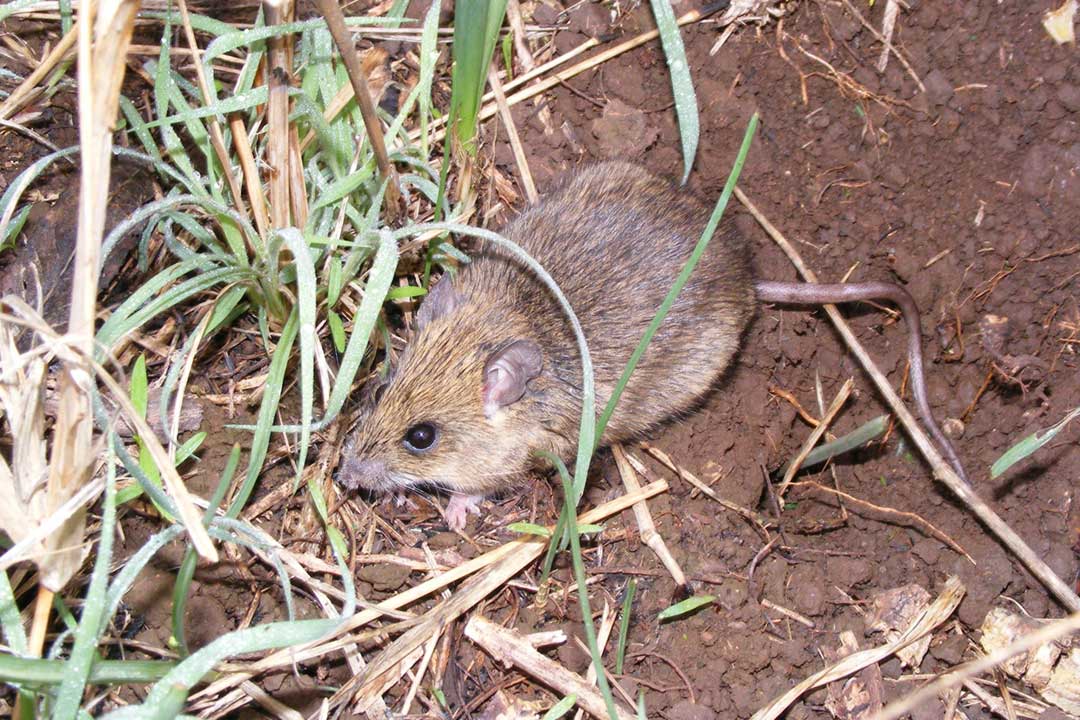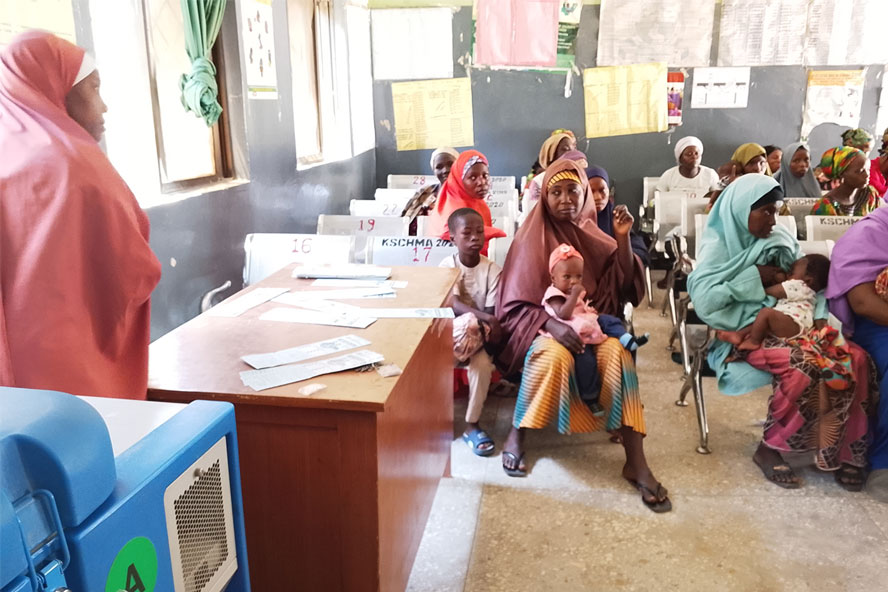Drier, hotter, rattier: as the weather shifts, Nigeria braces for Lassa fever
In rural Ondo state, people are preparing for the annual dry spell – which brings with it, among other threats, an increased risk of rat-borne, deadly Lassa fever.
- 29 November 2023
- 7 min read
- by Afeez Bolaji

In recent years, Ogbese, a rice farming area in Nigeria's Ondo State, has become a hotspot of Lassa fever, an acute viral haemorrhagic illness transmitted by rats.
Ondo has been hard-hit. Just three states, Ondo, Edo and Bauchi, have recorded 75% of Nigeria's confirmed Lassa fever cases this year, with Ondo seeing the highest number of fatalities.
“Climate change affects distribution of Lassa fever across the country. The warmer temperature, which happens more during the dry season, prolongs rodents’ survival in the environment and increases the likelihood of Lassa fever transmission to humans."
– Dr Vincent Ojeh, climate scientist
The community is bracing for the hotter dry season, which runs from around December to March and tends to see a major spike in Lassa cases. But Michael Olonite, a community leader in Ogbese who survived a bout of Lassa fever three years ago, is confident his state – and Nigeria as a whole – can win the war against the viral disease.
Since his brush with the infection, the 64-year-old cleric has been leading campaigns to curb infections and deaths in his community and beyond.
"We attack rats in our environment and that is what has made [Lassa fever] cases drop. The infection rate used to be very high. Every month we do general cleaning in the community, clearing drainage channels and bushes close to residential areas," he says. Multimammate rats carry the Lassa virus without falling ill themselves, shedding it in their urine and faeces. Humans tend to contract the disease in contact with rat urine or droppings, but can also get sick after contact with the bodily secretions of infected humans.

Credit: Afeez Bolaji
"The village head set up an environmental monitoring team and whoever defaults will be picked up and handed over to the police. This singular step has helped a lot, because many people are now more conscious of the disease than before," Olonite says.
Season of the rat
Nigeria's wet and dry seasons vary across the country's regions. The south, which includes Ondo, experiences a long rainy season running generally from March to November.
The seasonal shifts have reliable effects on Lassa fever transmission. Data published by the Nigeria Centre for Disease Control reveal that between 2016 and 2023, the vast bulk of Lassa cases have been recorded between December and May.
Across that seven-year period, more than 4,500 confirmed cases and about 970 deaths were reported during the dry seasons, while about 1,100 confirmed cases and 174 deaths were reported in the wet season.
A climatologist at Taraba State University in Nigeria's northeast, Dr Vincent Ojeh says that Lassa fever is more prevalent during the dry season when warmer temperatures and rising rates of deforestation force infected rodents out of their natural habitat in the bush to seek shelter in human habitations.
And as the global climate crisis changes weather patterns, the risk patterns from Lassa fever may be changing too.
Have you read?
"Climate change affects distribution of Lassa fever across the country. The warmer temperature, which happens more during the dry season, prolongs rodents' survival in the environment and increases the likelihood of Lassa fever transmission to humans.
"The virus can also survive for several days in rodents' urine and faeces, and warmer temperature can extend this survival period. Deforestation also contributes to the spread of Lassa fever because it will disrupt the natural habitats of the mastomys [multimammate rat], forcing them to seek food and shelter in human settlements," he says.
Global climate crisis expected to spur Lassa's spread
The last several years have seen rising incidence of Lassa fever in endemic parts of Nigeria – Ondo, specifically, has seen higher rates of disease in urban zones since 2017. Research has shown that climate is one of the principal drivers of those patterns.
Moreover, it isn't only the mosquito-borne diseases whose geographic range is broadening amid warming global temperatures.
"Climate change… is forcing everything that can to get out of the heat. And that means running to the poles or up mountainsides," Professor Aaron Bernstein, Head of the Center for Climate, Health, and the Environment at Harvard T.H Chan School of Public Health told CEPI last year.
"Everything" includes rats.
A 2022 modelling study by scientists at Scripps Research and the University of Brussels projected a "vast expansion" of Lassa fever within and beyond West Africa in the next several decades, as a result of climate and land-use changes.
According to their models, the number of people at risk of exposure to Lassa fever could jump by a staggering 600%, to 700 million by 2070.
Ojeh believes that the prevailing disease trend won't change as the country heads into another dry season, and urges mitigation strategies, like effective rodent control measures, to temper the spike.

Credit: VIncent Ojeh
"The people who have authority to encourage and enforce good sanitation and hygiene practice should do so.
"Proper food storage and disposal is ultimately very important to reduce human contact with urine and faeces of rodents carrying Lassa fever. A surveillance system must be put in place and there should be more research on the trend of this virus during the dry and rainy seasons," he adds.
Ogbese gets ready
Olonite, a member of ward development committee at Ogbese Health Centre, says many locals understand the climate dynamics of Lassa fever and have increased preventive measures ahead of the peak period.
"Many people are aware that the cases go up in the dry season when bushes dry up, and they have been sensitised to take more preventive measures. Community health workers and volunteers have started educating the people on how to reduce exposure to the disease at this period. We tell them to report any suspected case at the community health centre and minimise contacts with sick persons.
"The health centre has a lab and once basic tests show that the sick person [does not have] malaria or typhoid fever, it refers the patient to the federal medical centre in Owo for further treatment. We also encourage people to observe personal hygiene including regular hand washing and the use of hand sanitiser, though many people cannot afford it [hand sanitiser] due to poverty," he says.
A tour around the community, indeed, confirms Olonite's account of a concerted effort locals are making to keep the environment clean. Several bush paths leading to residential buildings have been cleared, and the surroundings are clean.
Even among these strikingly orderly environs, Grace Ahmed's property, in the centre of town, stands out. "House cleaning and environmental sanitation is more frequent now in my home as the dry season approaches. We cut the grasses in our surroundings every two to three weeks and ensure our food is clean and well prepared. We don't expose our food and we always wash the dishes immediately after use," Ahmed, a mother of four, tells VaccinesWork.
Tackling behaviour patterns that fuel Lassa fever
Just as they can mitigate risk, seasonal human behaviours also have the potential to fuel risk, explains Prof Michael Asuzu, a consultant epidemiologist at the University of Medical Sciences in Ondo. Bush burning, for instance, an agricultural practice often deployed in dry spells, can push humans and rats into closer contact.
"We need increased education, especially at this period. If anybody has any unusual fever, they should quickly alert community health workers. They [community health workers] also need to raise awareness so they can track more suspected cases and pick them up early," he advises.
Dr Benson Okwara, a consultant physician and Head of Infectious Diseases Management at the University of Benin Teaching Hospital (UBTH) in Edo State, says the government is organising sessions to educate health workers and communities on how to better manage prevalence of Lassa fever in the dry season.
"This is no departure from what we have been doing. Rather, we have increased it because there is a spike in Lassa fever at this period. We are doing more sensitisation, especially in endemic areas. We let the people know about the threat and the means of transmission.
"We encourage them to avoid bush burning and take personal hygiene very seriously. We also warn people against spreading their food in the open to avoid contact with rats. The Edo State Ministry of Health has also embarked on a programme to reduce the rodent population.
"At the hospital level we are not letting down our guard. There is continuous education of health workers so they can have a high index of suspicion. Education is very important across the board and that is what we have been doing," Okwara says.
NCDC driving preparedness across states
The incident manager, National Lassa Fever Technical Working Group, Dr Yetunde Abioye, says as part of preparations for the dry season spike, the NCDC carried out a review of the last Lassa fever outbreak in August to identify gaps in emergency response and implement corrective measures.
"We have also sent a joint alert on Lassa fever to states for them to get ready for the outbreak. We also hold a bi-weekly meeting to monitor the situation. With the joint alert, states are making provisions and from some of the responses we have got, we have been sending drugs and consumables from our national stockpile to states to support them in their response," she explains.









